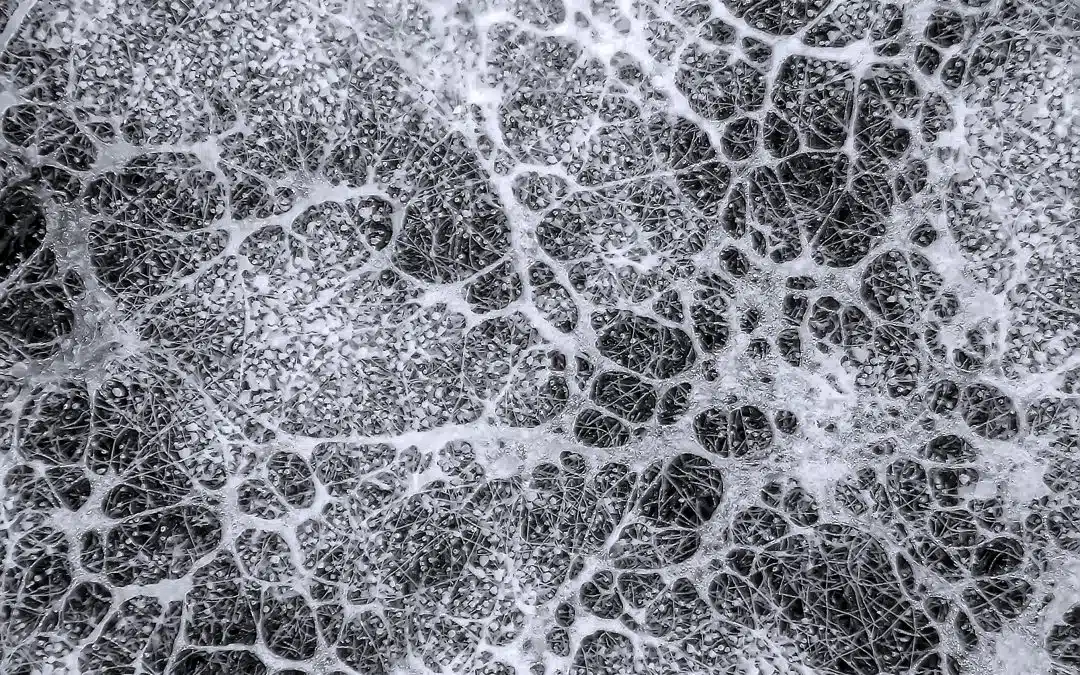Mold illness is considered the original environmental illness and is most commonly associated with water-damaged buildings or homes. It is estimated that over 25% of all buildings in the U.S. have sustained water damage. Water-damaged buildings often host molds that can affect human health.
Mold Has a Purpose
Mold’s purpose on the planet is to recycle, decompose, and transform plant debris into nutrients for new plant growth. We need mold and couldn’t do without it. It’s useful outside for agriculture. But if it gets indoors, it can get out of control and take over your home or building, your belongings, and your body. Mold is the ultimate survivor and knows how to lurk inside a building undetected. Sometimes you can’t see it or smell it since it rarely has an odor if it’s not exposed to air. Mold can hide under flooring and behind walls without creating any scent.
Mold illness is difficult to identify since most people develop symptoms slowly and gradually. If symptoms get worse on rainy days, with barometric pressure changes, and after eating carbohydrates, it can be a clue for mold illness. Mildew is in the mold family but not in the same family as the toxic indoor molds. Mold and mildew secrete substances that can be harmful to health but it’s the mycotoxins produced by molds (fungi) that do most of the damage to the body.
Mycotoxins
Mycotoxins can also be found in food and animal feed, posing a threat to health. Foods that are highest in mycotoxins include corn, wheat, rice, and most other grains, aged and moldy cheeses, peanuts and tree nuts (almonds, pistachios, pecans, walnuts, hazelnuts, Brazil nuts), dried fruits, grapes, beer, wine, and coffee. Meat and milk from animals fed a contaminated diet are also a source. Chronic exposure to contaminated food can add to the toxic burden and impair healing.
Exposure to these mycotoxins from the air or dust in water-damaged buildings, or other sources such as contaminated food, can trigger an inflammatory reaction leading to chronic symptoms. Mycotoxins have diverse actions. They are potent nerve toxins, highly inflammatory to lung tissue, and they suppress the immune system. Like other environmental toxins, mycotoxins are generally eliminated by the liver and can cause glutathione depletion if the liver is overwhelmed. Glutathione is the body’s internal antioxidant that helps with the detoxification process. Low levels of glutathione are a common finding in patients with mold illness. Therefore, certain genetic variations with liver detox genes increase a person’s susceptibility to mycotoxins.
Symptoms of Mold Illness
People with certain genetics and any impairment in their detoxification ability are more prone to mold symptoms. While many are not bothered by moldy environments or food, some can become severely ill. Symptoms of mold illness can be widespread and vague. It’s almost impossible to provide a complete list. If mold is a problem for you, it generally causes more than one symptom in more than one area of your body. Here are some of the most common symptoms:
-
- EARS, EYES, NOSE & THROAT: sneezing, runny nose, sinusitis, post-nasal drip, nasal polyps, allergies, ringing in the ears, irritated eyes, swollen lymph nodes, vision problems
- RESPIRATORY: shortness of breath, wheezing, chronic dry cough, burning lungs, sensitivity to fragrances, colds that go easily to the lungs, smoke sensitivity
- DIGESTIVE: appetite changes, weight gain, nausea, diarrhea/constipation, cyclic vomiting, bloating, food sensitivities, sweet cravings
- CIRCULATORY: many spider veins, cherry angiomas, easy bruising/bleeding, irregular heartbeat, low blood pressure, iron-deficiency anemia, varicose veins
- SKIN: sensitive skin, itchy skin, burning sensation, flushing, rash, fungal infections, sensitivity to sunlight
- BRAIN: brain fog, confusion slowed thinking, memory loss, trouble finding the right word, dementia
- NERVOUS SYSTEM: anxiety, depression, poor coordination, headache, migraine, slow reflexes, insomnia, tremors, seizures, daytime sleepiness
- IMMUNE SYSTEM: increased susceptibility to infection, long-lasting colds, viral infections becoming bacterial
How to Diagnose Mold Illness
Diagnosing mold illness is getting easier now with urine tests to detect mycotoxins. However, it can still be challenging as it sometimes occurs in combination with other conditions such as Lyme disease. Mold illness and Lyme disease are known as “the great imitators” because patients are often misdiagnosed with other conditions like fibromyalgia, chronic fatigue syndrome, mental illness, attention deficit disorder, multiple sclerosis, depression, and respiratory disorders. Because of the complex nature of mold illness, people often experience lowered disease resistance and heightened sensitivities. Most conventional doctors do not understand the implications that mycotoxins have on the human body.
Overcoming Mold Illness
To overcome mold illness, it’s important to first get out of the moldy environment. Then supporting your body’s detoxification process with foods and treatments can result in noticeable improvements. Sanoviv recently launched its two-week Mycotoxin Detox program and remains committed to helping those who are dealing with mold illness. This targeted program supports the body’s ability to remove mycotoxins by improving the detoxification pathways.
The goal is not to eliminate all mold exposure (which is impossible if a person wants to live normally in society). Instead, the treatment goal is to reduce the toxic load and improve the detoxification system. When the body has a high level of mycotoxins (and other toxins at the same time) and the detox pathways are blocked or insufficient, medical intervention like the Sanoviv Mycotoxin Detox program becomes necessary.
If you suspect you’re dealing with mold illness, contact the Sanoviv admissions department. It is possible to overcome mold illness and live a healthy life.

